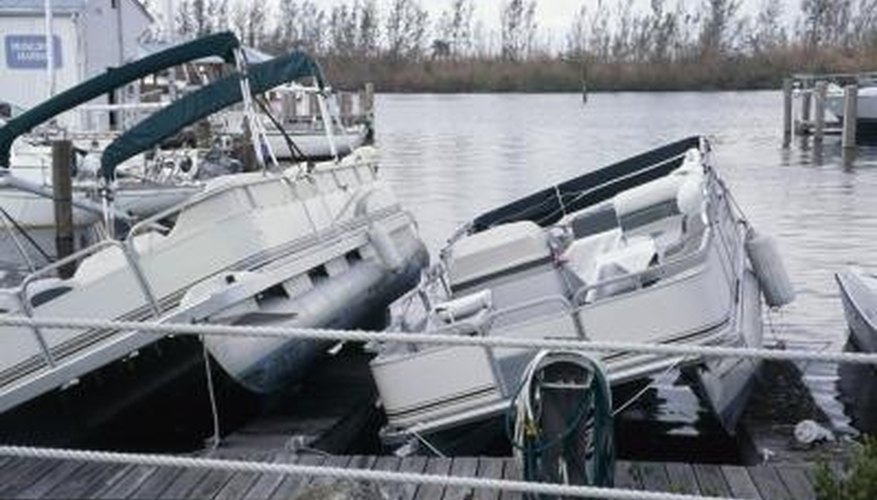
Small punctures and pinholes in pontoons might not be immediately noticeable, but can still cause you to take on enough water to cause problems. Eventually, water in the pontoons can cause increased gas consumption due to the extra weight. Steering can also be affected due to the weight distribution becoming uneven. It can also cause the boat to sit too low in the water, and potentially to go under.
Thus, it is good to repair pontoon leaks early on, before a small enough issue becomes a much larger one.
Items you will need
Self-hardening plastic metal (putty)
Epoxy waterproof sealer
18, 24,or 36 grit sandpaper
No-sand fiberglass primer
Acetone
Fiberglass anti-fouling bottom paint
Disposable non-foam rollers
Disposable paint brushes
Dust mask
Clean the area of and around the leak thoroughly.
Sand the area to give the repairing compounds a good surface to stick to. It should not be too smooth, but should not have rough edges.
Fill small punctures with putty, according to its directions. Allow the putty to cure, then sand it to smooth. For areas with pinholes, mix putty with prepared epoxy sealer to a rollable consistency, and then roll and/or brush it to cover the area.
Wait for the putty and epoxy to dry. Sand it to roughen the surface slightly. Apply a coat of epoxy sealer over the area with a brush and/or roller, and wait for it to dry before proceeding.
Cover the area with a coat of no-sand primer and allow it to dry according to its instructions. The primer and paint for fiberglass hulls works in this instance because you are covering the putty and epoxy, not the metal.
Paint the area with a coat of fiberglass anti-fouling bottom paint. Allow it to dry.
Warnings
- Depending upon where the leak is located on the pontoon, it may be helpful to use jacks, wenches and other equipment to take the pontoon off of its trailer (in the absence of a boat lift), and to put it on a stand for easy access. This can be a big job, and can also be dangerous, so extreme caution is recommended. If at all possible, repair larger boats while on their trailers.
References
Warnings
- Depending upon where the leak is located on the pontoon, it may be helpful to use jacks, wenches and other equipment to take the pontoon off of its trailer (in the absence of a boat lift), and to put it on a stand for easy access. This can be a big job, and can also be dangerous, so extreme caution is recommended. If at all possible, repair larger boats while on their trailers.
Writer Bio
Jennifer Thompson started editing for her own online business in 2001, then began online editing and writing for others in 2005. Her articles have been published with "Sportsman's News" on Fox News and for a number of other successful ventures.



